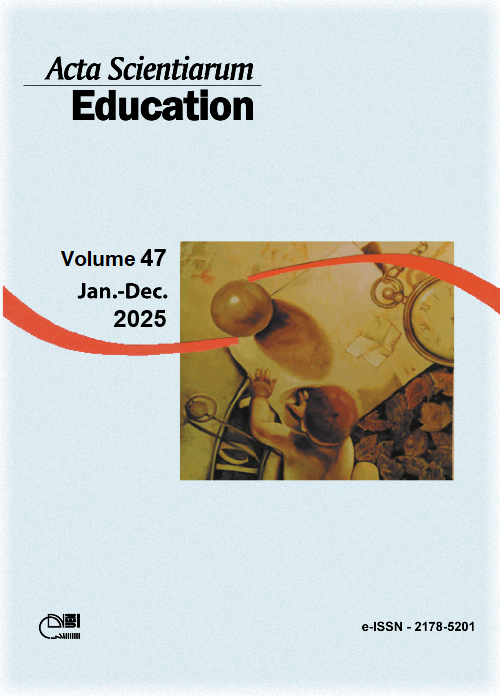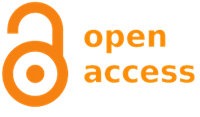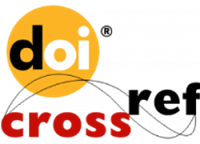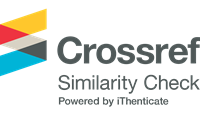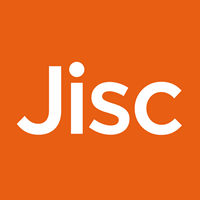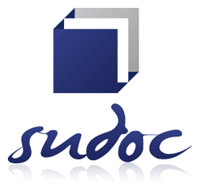Análise multigrupo da disposição de integrar Chatbots de IA no ensino e aprendizagem de física
Resumo
A integração de chatbots/tecnologias de inteligência artificial no processo de ensino-aprendizagem melhora o resultado de aprendizagem dos alunos e reduz o estresse pedagógico dos professores em sala de aula. O presente estudo centrou-se na vontade dos professores de física em exercício e em formação em integrar IA Chatbots no ensino e aprendizagem de física. 45 professores de física em serviço e 55 professores de física em formação foram envolvidos no estudo. Os componentes da atitude em relação à IA e ao Índice de Prontidão Tecnológica foram correlacionados com a sua vontade de integrar Chatbots de IA no ensino. Três instrumentos de pesquisa foram adaptados e utilizados para extrair informações dos entrevistados. Foi empregado o Modelo de Mínimos Quadrados Parciais de Equações Estruturais (PLS-SEM) e os dados coletados foram analisados no software SmartPLS versão 4.0.9.2. A análise multigrupo dos professores de física em formação e em formação inicial foi realizada separadamente e em conjunto para determinar a diferença na disposição de integrar AI Chatbots no processo de ensino-aprendizagem. As conclusões do estudo revelaram que os componentes afetivos, comportamentais e cognitivos da atitude em relação à IA correlacionaram-se significativamente com a vontade dos entrevistados em integrar os Chatbots de IA no processo de ensino-aprendizagem. O estudo concluiu que a atitude em relação à IA influencia a sua vontade de integrar AI Chatbots no processo de ensino-aprendizagem.
Downloads
Referências
Adiguzel, T., Kaya, H., & Cansu, F. (2023). Revolutionizing education with AI: exploring the transformative potential of ChatGPT. Comtemporary Educational Technology, 15(3), 1-13. https://doi.org/10.30935/cedtech/1315
Barkirtas, H., & Akkas, C. (2020). Technology readiness and technology acceptance of academic staffs. International Journal of Management Economics and Business, 16(4), 1043-1058. https://doi.org/.10.17130/ijmeb.853629
Blut, M., & Wang, C. (2019). Technology readiness: a meta-analysis of conceptualization of the construct and its impact on technology usage. Journal of the Academy of Marketing Science, 48, 649-669. https://doi.org/10.1007/s11747-019-00680-8
Chatterjee, S., & Bhattacharjee, K. K. (2020). Adoption of artificial intelligence in higher education: a quantitative analysis using structural equation modelling. Education and Information Technologies, 25, 3443-3463. https://doi.org/10.1007/s10639-020-10159-7
Chiu, Y.-T., Zhu, Y.-Q., & Corbett, J. (2021). In the hearts and minds of employees: a model of pre-adoptive appraisal toward artificial intelligence in organizations. International Journal of Information Management, 60, 102379. https://doi.org/10.1016/J.IJINFOMGT.2021.102379
Conner, M., Wilding, S., Harreveld, F. van, & Dalege, J. (2020). Cognitive-affective inconsistency and ambivalence impact on the overall attitude-behaviour relationship. Personality & Social Psychology Bulletin, 47(4), 673-687. https://doi.org/10.1177/0146167220945900
Dimitriadis, G. (2020). Evolution in education: Chatbots. Homo Virtualis, 3(1),47-54. https://doi.org/10.12681/homvir.23456
Durak, H. Y., & Onan, A. (2023). An examination of studies on the use of Chatbots technology in the field of education. In 5th International Conference on Applied Engineering and Natural Sciences, 121-123. https://as-proceeding.com/
Fernoaga, V., Stelea, G.-A., Gavrila, C., & Sandu, F. (2018). Intelligent education assistant powered by chatbots. Proceedings of 14th International Conference E-learning and Software for Education. Bucharest. https://doi.org/10.12753/2066-026x-18-122
Gonda, D. E., & Chu, B. (2019). Chatbots as a learning resource? Creating conversational bots as a supplement for teaching assistant course. Proceedings of International Conference on Engineering, Technology and Education (TALE), 1-5. https://doi.org/10.1109/TALE48000.2019.9225974
Jarrar, Y., Awobamise, A. O., & Sellos, P. S. (2020). Technological readiness index (TRI) and the intention touse smartphone apps for tourism: a focus on inDubai mobile tourism app. International Journal of Data and Network Science, 4, 297-304. https://doi.org/10.5267/j.ijdns.2020.6.003
Julian, R. K., & Dhini, A. (2022). The role of technology readiness towards acceptance on smartwatch use. In Proceedings of the 7th North American International Conference on Industrial Engineering and Operations Management. 1990-1999. https://doi.org/10.46254/na07.2022449
Lin, C., Huang, A. Y. Q., & Yang, S. J. H. (2023). A review of AI-driven conversational chatbots implementation methodologies and challenges (1999-2022). Sustainability, 15(5), 4012. https://doi.org/10.3390/su15054012
Liu, L., Subbareddy, R., & Raghavendra, C. G. (2022). AI intelligence chatbot to improve students learning in the higher education platform. Journal of Interconnection Networks, 22(2), 1-17. https://doi.org/10.1142/s021926592143
Mageira, K., Pittou, D., Papasalouros, A., Kotis, K., Zangogianni, P., & Daradoumis, A. (2022). Educational AI Chatbots for content and language integrated learning. Applied Science, 12(7), 3239. https://doi.org/10.3390/app12073239
Malik, R., Shrama, A., Trivedi, S., & Mishra, R. (2021). Adoption of Chatbots for learning among university students: role of perceived convenience and enhanced performance. International Journal of Emerging Technologies in Learning, 16(18), 200-212. https://doi.org/10.3991/ijet.v16i18.24315
P, M. G. C., Srivastava, A., Chakraborty, S., Ghosh, A., & Raj, H. (2021). Development of information technology telecom chatbot: an artificial intelligence and machine learning approach.In Proceedings of 2nd International Conference on Intelligent Engineering and Management [ICIEM] (pp. 216-221).https://doi.org/10.1109/ICIEM51511.2021
Parasuraman, A. (2000). Technology readiness index(Tri): a multiple-item scale to measure readiness to embrace new technologies. Journal of Service Research, 2(4), 307-320. https://doi.org/10.1177/109467050024001
Parasuraman, A., & Colby, C. L. (2015). An updated and streamlined technology readiness index: TRI 2.0. Journal of Service Research,18(1), 59-74. https://doi.org/10.1177/1094670514539730
Prananta, A. W., Susanto, N., Purwantoro, A., & Fuadah, N. (2023). ChatGPT artificial intelligence integration in science learning media: systematic literature review. Jurnal Penelitian Pendidikan IPA, 9(7), 315-321. https://doi.org/10.29303/jppipa.v9i7.4386
Riza, A. N. I., Hidayah, I., & Santosa, P. I. (2023). Use of chatbots in e-learning context: a systematic review.In Proceedings of IEEE World AI loT Congress (AlloT), Seattle, WA. https://doi.org/10.1109/AIIOT58121.2023.10174319
Sandu, N., & Gide, E. (2019). Adoption of AI-Chatbots to enhance student learning experience in higher education in India. In 18th International Conference on Information Technology Based Higher Education and Training (ITHET), Magdeburg, DE. https://doi.10.1109/ithet46829.2019.8937382
Schepman, A., & Rodway, P. (2020). Initial validation of the general attitudes towards artificial intelligence scale. Computers in Human Behavior Reports, 1, 100014. https://doi.org/10.1016/J.chbr.2020.100014
Suh, W., & Ahn, S. (2022). Development and validation of a scale measuring student attitudes toward artificial intelligence. SAGE Journal, 12(2). https://doi.org/10.1177/21582440221100463
Supriyadi, E., & Kuncoro, K. S. (2023). Exploring the future of mathematics teaching: insight with ChatGPT. Union Jurnal Ilmiah Pendidikan Matematika, 11(2), 305-316. https://doi.org/10.30738/union.v11i2.14898
West, C. G. (2023). AI and the FCI: Can ChatGPT project an understanding of introductory physics? ArXiv. https://doi.org/10.48550/arXiv.2303.01067
Wolf, L. J., Haddock, G., & Maio, G. R. (2020). Attitudes. Oxford Research Encyclopedia of Psychology.https://doi.org/10.1093/acrefore/9780190236557.013.247
Copyright (c) 2025 Wasiu Olayinka Yahaya, Abdulrasaq Oladimeji Akanbi, Abdulkadir Aishat Yusuf

This work is licensed under a Creative Commons Attribution 4.0 International License.
This work is licensed under a Creative Commons Attribution 4.0 International License.
DECLARAÇÃO DE ORIGINALIDADE E DIREITOS AUTORAIS
Declaro que o presente artigo é original, não tendo sido submetido à publicação em qualquer outro periódico nacional ou internacional, quer seja em parte ou em sua totalidade.
Os direitos autorais pertencem exclusivamente aos autores. Os direitos de licenciamento utilizados pelo periódico é a licença Creative Commons Attribution 4.0 (CC BY 4.0): são permitidos o compartilhamento (cópia e distribuição do material em qualquer suporte ou formato) e adaptação (remix, transformação e criação de material a partir do conteúdo assim licenciado para quaisquer fins, inclusive comerciais).
Recomenda-se a leitura desse link para maiores informações sobre o tema: fornecimento de créditos e referências de forma correta, entre outros detalhes cruciais para uso adequado do material licenciado.



